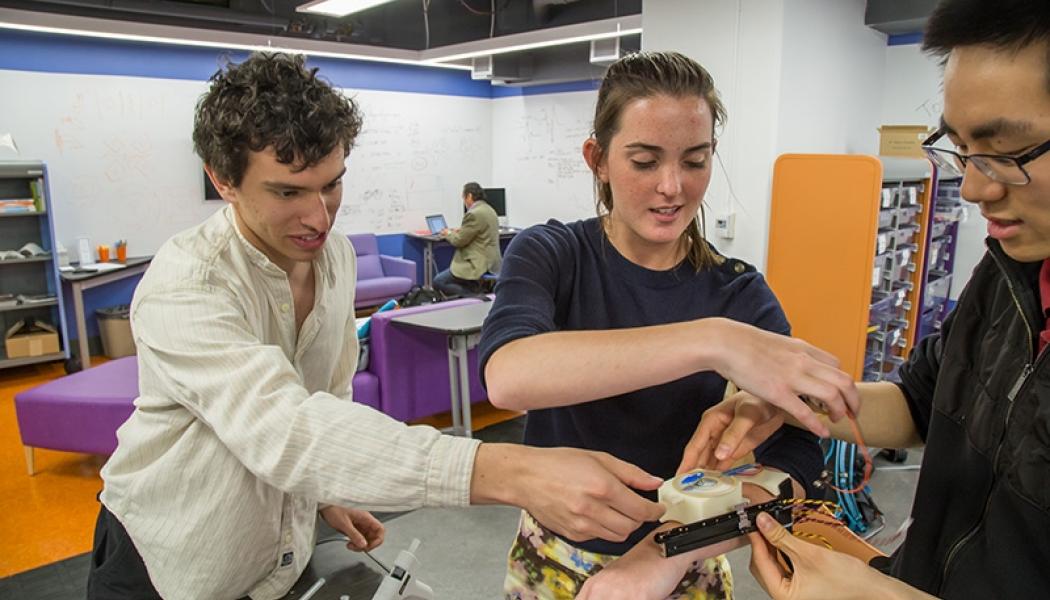
Engineers at Princeton are working to solve some of our most critical challenges, from reducing dependence on fossil fuels to making the Internet more secure to working at the intersection of biology and technology to combat disease.
“The quality of a liberal arts university today depends greatly on the strength of its engineering programs, which serve as windows upon human experience and as models of problem-driven, rigorous inquiry in addressing some of the world’s most pressing challenges.”
The University’s engineering school, ranked among the top in the world, is home to world-class faculty committed to innovation that benefits society. The school is distinguished by its deep expertise in fundamental sciences, an entrepreneurial ethos, and interdisciplinary research that combines technical expertise with the strengths of a liberal arts education.
“The most challenging problems society faces are thorny, complex, and large, which no single expert will solve on his or her own. Interdisciplinary teamwork is how many future engineering breakthroughs will occur,” said Emily Carter, dean of the School of Engineering and Applied Science, the Gerhard R. Andlinger Professor in Energy and the Environment, and a professor of mechanical and aerospace engineering and applied and computational mathematics.
Student interest in engineering has skyrocketed, and today a quarter of all Princeton undergraduates major in engineering. More than three-quarters of students take at least one engineering course during their four years at Princeton.
Discovery, Design, Invention
Here are just a few examples of current faculty research:
- Insights for cancer treatments: Celeste Nelson, a professor of chemical and biological engineering, and her colleagues have shown that stiffness and lack of oxygen in tumors trigger a biological switch that enhances the growth of cancer cells. Their research could provide insights for new cancer treatments.
- Concrete solutions to global warming: Cement production accounts for five to eight percent of human-generated carbon dioxide. Claire White, an assistant professor of civil and environmental engineering and the Andlinger Center for Energy and the Environment, is exploring manufacturing methods that will minimize cement’s acceleration of global warming.
- Creating a safer cyberspace: Andrew Appel ’81, Princeton’s Eugene Higgins Professor of Computer Science, leads a team of researchers working to eliminate the programming errors that make our private data vulnerable to hackers.
- Improving patient care: Barbara Engelhardt, an assistant professor of computer science, is developing statistical techniques to improve the care and outcome of hospital patients. Her research group is analyzing data from more than 270,000 hospital patients to understand how people respond to specific treatments and customize patient monitoring, diagnosis, and treatment strategies.
The Promise of New Possibilities
Princeton’s engineers and their colleagues in related disciplines are working to create a healthier, safer, and more sustainable world. The University is committed to building on its many strengths to make even greater contributions to solving society’s most daunting problems in the years to come.
For information on supporting engineering and applied science, contact Jane Maggard, associate dean for development, engineering and applied science, at jmaggard@princeton.edu or 609.258.6850 or Tom Roddenbery, associate director, strategic priorities, at thomasr@princeton.edu or 609.258.6122.


